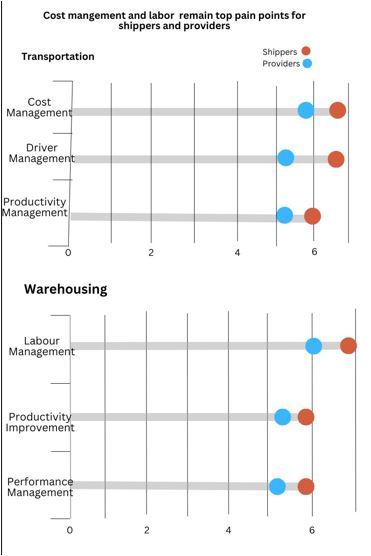Key Takeaways
- Effective workforce management is essential: Proper resource planning helps logistics companies avoid delays, reduce operational costs, and improve customer satisfaction by addressing understaffing issues.
- Inefficiencies in resource planning impact profitability: Poor workforce management practices can lead to higher operational costs and operational strain, emphasizing the need for better forecasting and planning.
- Leveraging technology can optimize workforce planning: AI-powered predictive models and real-time data integration enable logistics companies to align workforce capacity with fluctuating demand, enhancing efficiency and profitability.
Logistics companies today face complex operational challenges. Managing vast inventories, coordinating equipment fleets, and responding to unpredictable customer demand are just the tip of the iceberg. The ever-changing demand—shaped by seasonal fluctuations, supply chain disruptions, and unforeseen events—makes it crucial to implement effective workforce management to align workforce capacity with fluctuating demand across regions and business cycles.
The consequences of poor resource planning can be disastrous:
- Understaffing leads to delays, missed deadlines, and customer dissatisfaction. Employees may become overworked, lowering service quality.
- Overstaffing results in wasted expenses, underutilized resources, and excessive operational costs.
- Inaccurate forecasting can result in misallocated resources, ultimately driving inefficiencies and higher costs.
The Hidden Costs and Strain on Logistics
These inefficiencies often go unnoticed until they significantly impact profitability. Research indicates that poor workforce planning can increase operating costs by as much as 20%. A study by DHL also found that nearly 50% of logistics professionals consider workforce management among the most significant challenges, especially during unpredictable demand cycles.
Beyond the numbers, the operational strain caused by poor resource planning is evident in the following:
- Delayed deliveries and misaligned workforce during peak periods
- Overburdened employees who are either stretched thin or not fully utilized.
- Bottlenecks in key operational areas like inventory management, transportation, and customer satisfaction.
These hidden costs threaten operational efficiency, weakening competitiveness and halting growth. But there’s a way out.
In warehousing, survey respondents identified labor management, productivity improvement, and performance management as the most pressing issues.

Future-Proof Your Logistics with Intelligent Resource Planning
To address these challenges, logistics companies can leverage connected technology solutions that can:
- Forecast demand accurately by utilizing AI-powered predictive models.
- Implement dynamic scheduling that adapts to demand fluctuations, minimizing idle time and overtime.
- Streamline resource allocation with real-time data integration, ensuring optimal workforce utilization.
Technology can not only solve resource allocation problems but also streamline the entire operational workflow, enabling businesses to respond faster and more effectively to demand changes.
Transform Your Logistics with Strong Technology Partnership
At Insight, we specialize in customized, integrated workforce management solutions that help logistics companies optimize their workforce planning, improve operational efficiency, and stay ahead of the competition.
Don’t wait for inefficiencies to take a toll. Contact us today to discover how we can help you streamline your resource and capacity planning, increase profitability, and enhance customer satisfaction.







